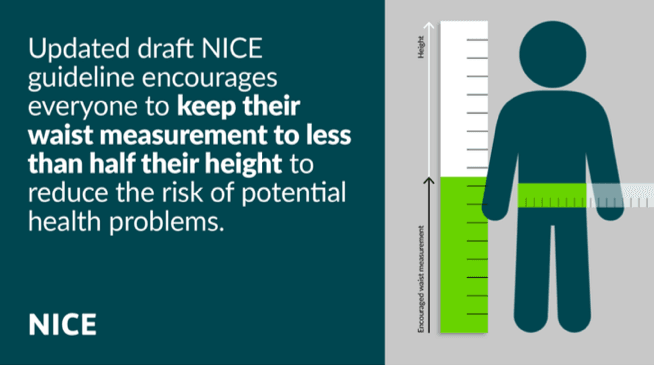Our Research Interests
Why Research is Important
The NHS strives to embed research as one of its core activities. Research is vital in providing the evidence we need to transform services and improve outcomes, such as developing new models of care and redesigning and strengthening care to benefit patients.
Research at the RJAH Orthopaedic Hospital
The RJAH orthopaedic hospital is a research active hospital where clinical research embedded in the NHS as an essential part of healthcare to generate evidence about effective diagnosis, treatment and prevention. Research is also people-centred to make it easier for patients to access research and be involved in the design of research and to have the opportunity to participate. You can find out more about our specific research interests under “current research studies” on the home screen.

Our Research Interests
Obesity And Bone Health
The relationship between obesity and osteoporosis is complex and multifaceted, involving various physiological, hormonal, and mechanical factors. At the metabolic bone unit, we carry out research on the relationship between obesity and how it affects bone quality. This is so that we can try to predict which patients are more likely to suffer bone fractures and try to treat them early. Here are some key factors related to obesity and its effect on bone health and how we are studying these in clinic, shown in blue text.
Obesity and Bone Health Summary
While obesity can increase bone density and provide some protection against fractures through mechanical loading and adipose cushioning, these benefits are often offset by higher fall risk, poorer bone quality, increased inflammation and associated metabolic and hormonal disturbances. Consequently, obese individuals may face a paradoxical situation where they are at an increased risk for certain types of fractures, despite having higher bone density. Managing obesity through a combination of weight management, physical activity, and nutritional optimisation is crucial to mitigate fracture risk.
Diabetes And Bone Health
The relationship between diabetes and fracture risk is complex and influenced by various factors. Both type 1 diabetes (T1D) and type 2 diabetes (T2D) are associated with an increased risk of fractures, but the mechanisms and contributing factors differ between the two types.
Type 1 Diabetes (T1D)
- Bone Mineral Density (BMD): People with T1D often have lower BMD, which contributes to an increased risk of fractures. This is partly due to the lack of insulin, which has an anabolic effect on bones.
- Age of Onset: T1D typically begins in childhood or adolescence, which can affect peak bone mass development.
- Glycemic Control: Poor glycemic (sugar) control in T1D is associated with increased fracture risk due to advanced glycation end-products (AGEs) accumulation in bone collagen, making bones more brittle.
Type 2 Diabetes (T2D)
- Bone Mineral Density (BMD): Individuals with T2D generally have normal or even higher BMD compared to non-diabetics, yet they still have an increased fracture risk. This paradox is attributed to poor bone quality.
- Bone Quality: Despite higher BMD, bone microarchitecture and material properties are often impaired in T2D, leading to increased fragility.
- Obesity: Many individuals with T2D are obese, which adds mechanical loading on bones but also increases the risk of falls due to reduced mobility and other complications.
In collaboration with other universities (Keele and Oxford), we are starting to look, in depth, at the effect of diabetes on bone health. One new area of study will be to look at blood samples from diabetic and non-diabetic patients so that we can look for ‘biomarkers’. These are small biological molecules involved in disease development, progression, and response to treatment. Biomarkers will pave the way for future precision-medicine where we can predict disease behaviour and tailor treatments for individual patients.
Diabetes and Bone Health Summary
Type 2 Diabetes is heavily associated with obesity. Diabetic patients, in particular, may have increased risk due to poor quality and higher susceptibility to falls.
Frailty and Bone Health
Clinical frailty refers to a medical condition characterised by decreased physiological reserve and increased vulnerability to stressors, resulting from cumulative declines across multiple organ systems. Frail individuals are at higher risk of adverse health outcomes, including falls, fracture, disability, hospitalisation and mortality. The Rockwood Clinical Frailty Scale (shown above) is a tool used in clinics to assesses frailty on a scale from 1 (very fit) to 9 (terminally ill) and is one of the most validated frailty scales. Identifying and managing frailty is important for optimising health outcomes and quality of life.
Here’s a detailed look at how each condition affects bone health and their combined impact.Frailty and Bone Health Summary
Clinical frailty and osteoporosis individually and collectively deteriorate bone health, increasing fracture risk. Addressing both conditions through nutritional support, physical activity, medical management, and fall prevention is crucial for maintaining bone health and improving overall quality of life in affected patients.
“The NHS belongs to the people. It is there to improve our health and wellbeing, supporting us to keep mentally and physically well, to get better when we are ill and, when we cannot fully recover, to stay as well as we can to the end of our lives. It works at the limits of science – bringing the highest levels of human knowledge and skill to save lives and improve health. It touches our lives at times of basic human need, when care and compassion are what matter most.”
